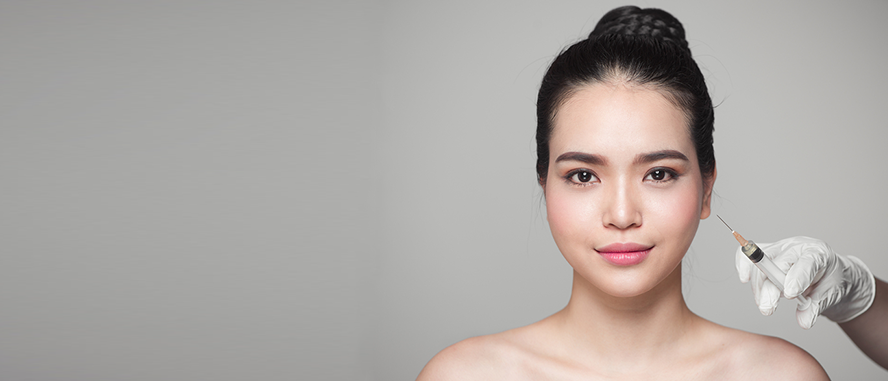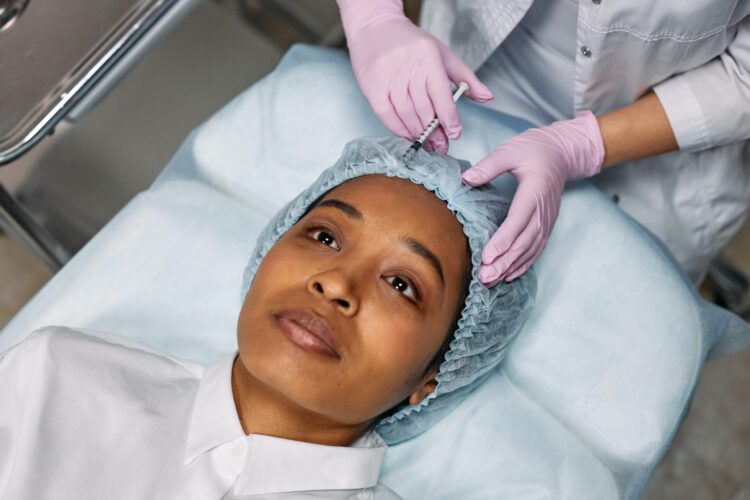Hyperpigmentation happens when your skin produces too much of the pigment melanin, which gives skin its color. As a result, darker areas of skin show up on the surface. These spots can be brown, black, gray, red, or pink in color and can range in size and shape.
The underlying causes of hyperpigmentation depend on the specific type you have. Similarly, the key to choosing the best treatment and prevention options is to know what type of hyperpigmentation you have, as certain types respond better to certain treatments.
Here, we break down the four most common types of hyperpigmentation, explaining what causes them, what they look like, and how to treat and prevent them.
1. Solar Lentigines (Sun Spots)
Also called sun spots, age spots, or liver spots, solar lentigines develop as a result of sun exposure. They are most common on areas like your face, hands, shoulders, and other areas that are often exposed to the sun. While sun spots can develop quickly after sun exposure, they most frequently occur as a result of accumulated UV damage, so you might not see them on your skin until years later.
The best way to prevent sun spots is to wear daily sunscreen, reapplying every two hours when outdoors or after swimming. Sun-protective clothing like wide-brimmed hats and lightweight, long-sleeved shirts can also help to prevent dark spots caused by the sun.
Laser and light treatments such as Sciton’s BBL Hero™ are some of the most effective treatments for sun spots. BBL Hero emits wavelengths of broadband light, which are then absorbed by the pigment in the targeted area. This breaks up the excess pigment and it is eliminated by your body’s natural metabolic processes.
One of the biggest benefits of BBL Hero is that it does not require extensive downtime or recovery time, so you can get back to your normal daily activities directly after your appointment.
2. Ephelides (Freckles)
Freckles, medically referred to as “ephelides,” are similar to solar lentigines in appearance. The main difference between freckles and sun spots is that true freckles have a genetic component to them and can be worsened by sun exposure. Lentigines, on the other hand, are caused solely by sun exposure and are not influenced by genetics.
People with red hair often have freckles because both traits are caused by a variation in the gene MC1R. This genetic variation causes a type of pigment called pheomelanin to be produced instead of the more common eumelanin. Pheomelanin is what gives red hair its color and freckles their rusty-brown color.
While freckles cannot be prevented altogether because they are linked to genetics, limiting sun exposure and being diligent about sunscreen use can help to minimize their appearance. Laser and light treatments and skin-lightening ingredients can also help to minimize the appearance of freckles.
3. Melasma
Melasma appears as flat brown or gray patches of skin. It is commonly referred to as “the mask of pregnancy,” as it most frequently occurs in pregnant women. This is because melasma is linked to elevated estrogen and progesterone levels, which occur with pregnancy as well as in women on hormonal birth control or hormone replacement therapy. For this reason, melasma may sometimes resolve on its own after pregnancy or after medications such as birth control are discontinued.
In some cases, however, melasma may respond best to treatment options such as topical skin-lightening products and gentle laser treatments like MOXI™. Not all laser treatments are suitable for treating melasma, as some can worsen dark spots caused by melasma. MOXI, on the other hand, is a safe and effective melasma treatment because it does not produce high levels of heat like some other laser skin treatments.
Melasma can also be worsened by sun exposure, so sun protection is a must when it comes to preventing future dark spots and minimizing existing spots.
4. Post-Inflammatory Hyperpigmentation (PIH)
Post-inflammatory hyperpigmentation occurs when too much melanin is produced during the wound-healing process, resulting in a discolored patch of skin. While PIH is not technically a scar, it is often confused with scarring because of its location at wound sites on the skin. Post-inflammatory hyperpigmentation often occurs after an acne breakout. Avoid popping pimples or picking at acne lesions, cuts, scrapes, or other skin injuries to help prevent this type of hyperpigmentation.
Sometimes, however, PIH will occur even if you do your best not to pick at scabs or pimples. Post-inflammatory hyperpigmentation can be treated with topical skin-lightening ingredients such as vitamin C, azelaic acid, kojic acid, or hydroquinone. Gentle chemical peels or laser or light treatments like BBL Hero can also be effective treatment options for PIH.
Moles vs. Dark Spots
Moles (nevi) and dark spots are commonly referred to interchangeably. However, there are a few notable differences. Moles are a type of skin growth caused by clusters of melanocytes, the cells that produce melanin, and are therefore often raised from the surface of the skin. Moles can be present from birth or may show up on the skin later in life, whereas dark spots caused by hyperpigmentation worsen with sun exposure and tend to appear on areas of the face and body that are often exposed to the sun.
Additionally, moles and skin cancer lesions can be similar in appearance, so it is important to get a yearly skin exam from your dermatologist to check for signs of skin cancer. Sun spots, freckles, melasma, and post-inflammatory hyperpigmentation are not cancerous.
In Summary
The best treatment for dark spots on your skin will depend on what type of hyperpigmentation you have. This is why getting a proper diagnosis from your dermatologist is such a crucial step in finding the most effective treatment that won’t worsen symptoms.
Are you ready to take the first step toward getting a brighter, more even skin tone? Call our Boca Raton & Fort Lauderdale office today at 561-462-0489 or contact us online to schedule an appointment with one of our medically-trained skincare professionals.

































































